Emanuele Plebani
A novel statistical methodology for quantifying the spatial arrangements of axons in peripheral nerves
Oct 18, 2022
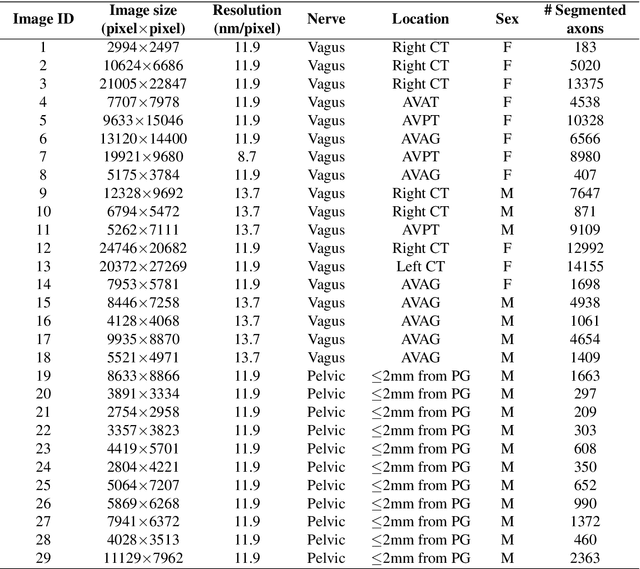
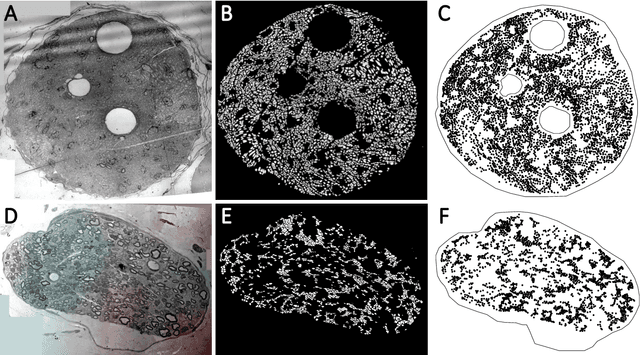
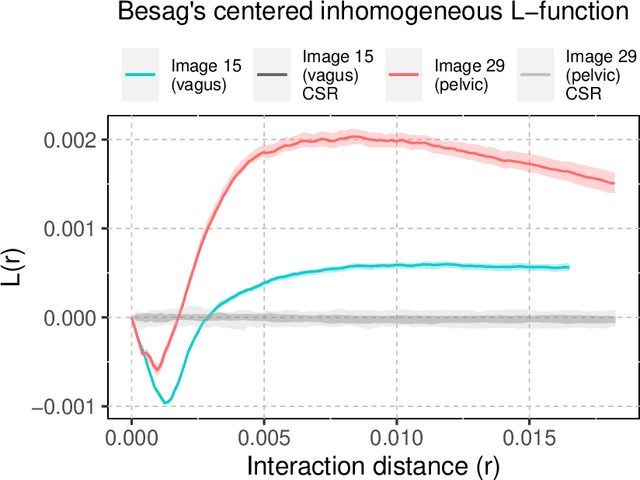
Abstract:A thorough understanding of the neuroanatomy of peripheral nerves is required for a better insight into their function and the development of neuromodulation tools and strategies. In biophysical modeling, it is commonly assumed that the complex spatial arrangement of myelinated and unmyelinated axons in peripheral nerves is random, however, in reality the axonal organization is inhomogeneous and anisotropic. Present quantitative neuroanatomy methods analyze peripheral nerves in terms of the number of axons and the morphometric characteristics of the axons, such as area and diameter. In this study, we employed spatial statistics and point process models to describe the spatial arrangement of axons and Sinkhorn distances to compute the similarities between these arrangements (in terms of first- and second-order statistics) in various vagus and pelvic nerve cross-sections. We utilized high-resolution TEM images that have been segmented using a custom-built high-throughput deep learning system based on a highly modified U-Net architecture. Our findings show a novel and innovative approach to quantifying similarities between spatial point patterns using metrics derived from the solution to the optimal transport problem. We also present a generalizable pipeline for quantitative analysis of peripheral nerve architecture. Our data demonstrate differences between male- and female-originating samples and similarities between the pelvic and abdominal vagus nerves.
Pre-trainable Reservoir Computing with Recursive Neural Gas
Jul 25, 2018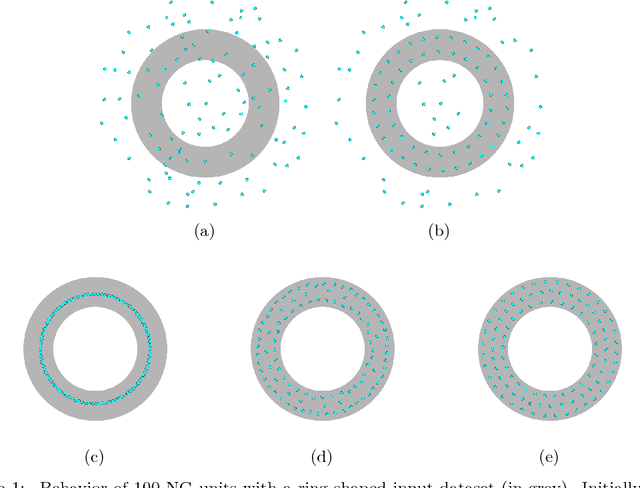
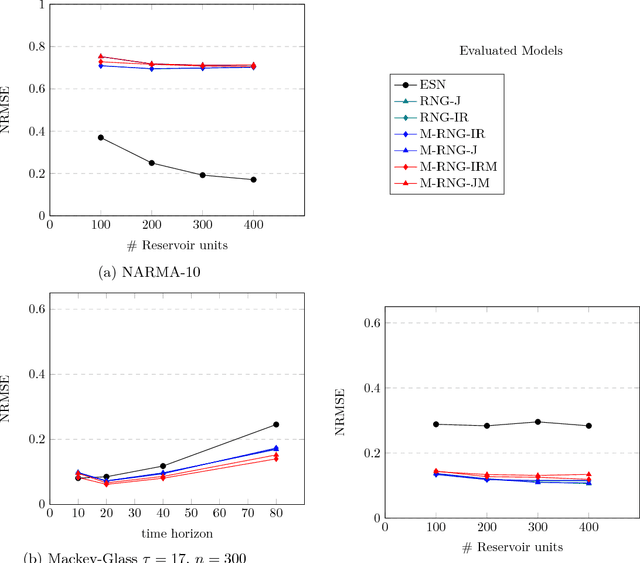
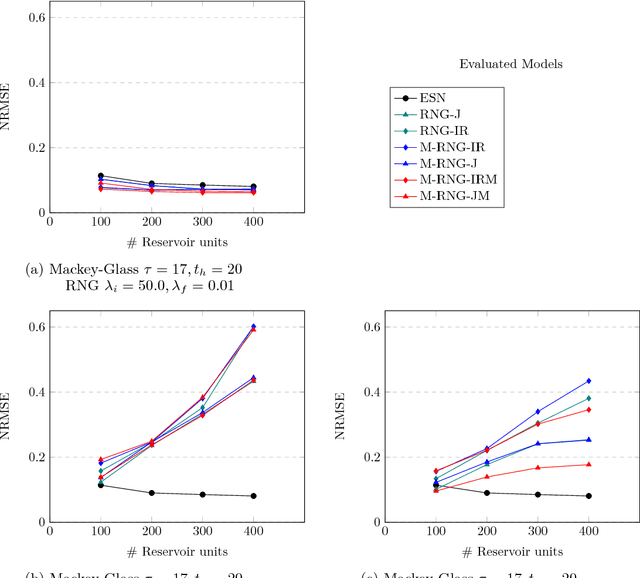
Abstract:Echo State Networks (ESN) are a class of Recurrent Neural Networks (RNN) that has gained substantial popularity due to their effectiveness, ease of use and potential for compact hardware implementation. An ESN contains the three network layers input, reservoir and readout where the reservoir is the truly recurrent network. The input and reservoir layers of an ESN are initialized at random and never trained afterwards and the training of the ESN is applied to the readout layer only. The alternative of Recursive Neural Gas (RNG) is one of the many proposals of fully-trainable reservoirs that can be found in the literature. Although some improvements in performance have been reported with RNG, to the best of authors' knowledge, no experimental comparative results are known with benchmarks for which ESN is known to yield excellent results. This work describes an accurate model of RNG together with some extensions to the models presented in the literature and shows comparative results on three well-known and accepted datasets. The experimental results obtained show that, under specific circumstances, RNG-based reservoirs can achieve better performance.
Reduced Memory Region Based Deep Convolutional Neural Network Detection
Sep 08, 2016



Abstract:Accurate pedestrian detection has a primary role in automotive safety: for example, by issuing warnings to the driver or acting actively on car's brakes, it helps decreasing the probability of injuries and human fatalities. In order to achieve very high accuracy, recent pedestrian detectors have been based on Convolutional Neural Networks (CNN). Unfortunately, such approaches require vast amounts of computational power and memory, preventing efficient implementations on embedded systems. This work proposes a CNN-based detector, adapting a general-purpose convolutional network to the task at hand. By thoroughly analyzing and optimizing each step of the detection pipeline, we develop an architecture that outperforms methods based on traditional image features and achieves an accuracy close to the state-of-the-art while having low computational complexity. Furthermore, the model is compressed in order to fit the tight constrains of low power devices with a limited amount of embedded memory available. This paper makes two main contributions: (1) it proves that a region based deep neural network can be finely tuned to achieve adequate accuracy for pedestrian detection (2) it achieves a very low memory usage without reducing detection accuracy on the Caltech Pedestrian dataset.
* IEEE 2016 ICCE-Berlin
 Add to Chrome
Add to Chrome Add to Firefox
Add to Firefox Add to Edge
Add to Edge